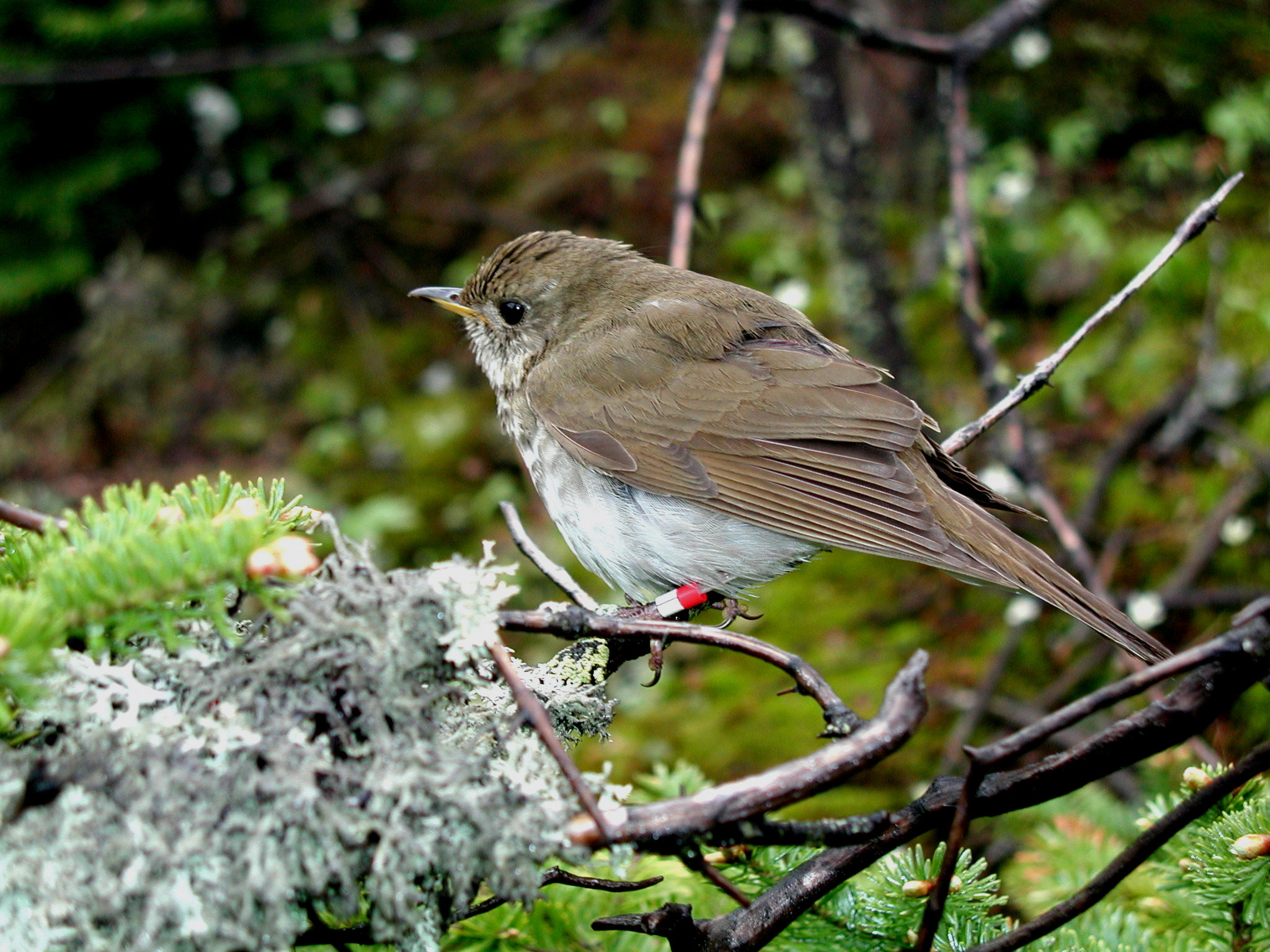Twenty Years of Monitoring the Bicknell's Thrush
Jul. 1st 2014The Vermont Center for Ecostudies (VCE) has conducted over 20 years of population monitoring and ecological research on the rare Bicknell’s Thrush. Chris Rimmer and Kent McFarland began studying this little known high-elevation songbird in 1992, when it was still considered a sub-species of Gray-Cheeked Thrush; it has since been recognized as a distinct species. At that time, they cautioned that this habitat-specific mountaintop dweller might be vulnerable to extinction. When VCE first started studying Bicknell’s Thrush there was scant information about this species. It was known to have disappeared from Mt. Greylock in Massachusetts but there was no baseline information on population trends or distribution. VCE began investigating the ecology and demographics of this secretive bird. These studies aimed to assess the species’ conservation status, against a backdrop of threats from acid precipitation, air pollution, mountaintop development, and, ultimately, climate change. After documenting the species’ U.S. distribution, VCE turned its focus of inquiry to breeding ecology, revealing that Bicknell’s Thrush has a:
- Highly unusual mating system known as “female-defense polygynandry”, in which a female stays with one nest but often mates with several males who in turn may mate with multiple females and typically tend more than one nest.
- Skewed adult sex-ratio with >2 males for every female, even though the ratio is 1:1 at the nestling and fledgling stages.
Because Bicknell’s Thrush is a long-distance migrant, a study of its full annual cycle was needed to elucidate its natural history and threats at both ends of the range. Field surveys targeting the Greater Antilles islands, where most overwintering birds were located in wet broadleaf forests on Hispaniola. These forests are under heavy pressure from illegal charcoal production, subsistence farming, logging and squatting. Loss of winter habitat is of crucial concern because of the birds’ restricted range and highly selective habitat requirements. Highlights of VCE’s findings included:
- All age and sex classes of Bicknell’s Thrush hold discrete, defended winter territories, with most birds returning to the same territory annually.
- Predation by introduced rats killed 9% of radio-tagged birds at two sites, and possibly led to an adaptive shift of nocturnal roosting behavior from broadleaf to adjacent pine forests.
- Overwintering males and females segregate by habitat type; males generally occupying higher-quality cloud forest habitat and females are relegated to suboptimal lower-elevation forests. This segregation is likely due to intersexual competition, in which larger males are able to outcompete females for prime winter habitats
- The habitat where females are concentrated on Hispaniola is one of the island’s most threatened forest types. Winter habitat limitations for females may be driving the skewed sex ratio observed in the species’ breeding range.
Human activities have made the survival of Bicknell’s Thrush precarious through habitat loss and fragmentation, air pollution and climate change. However, conservationists are mobilizing to preserve the species. Both VCE and the International Bicknell’s Thrush Conservation Group are putting knowledge into action to increase the Bicknell’s Thrush population across its migratory range. Better land management, engaging local partners to conserve critical habitats, controls on mercury emissions, and the recognition that this species is a bellwether of climate change lend hope of a brighter future for this intriguing, but globally vulnerable songbird.
 ecoNEWS VT
ecoNEWS VT